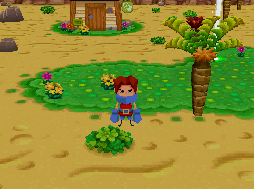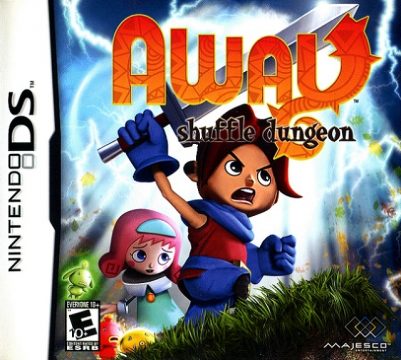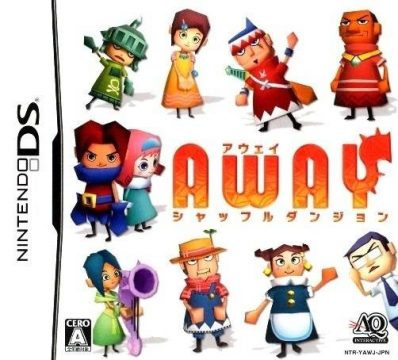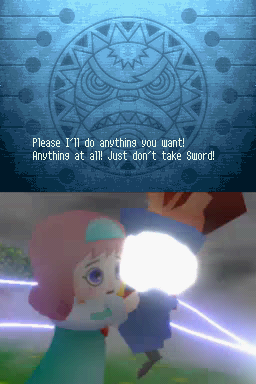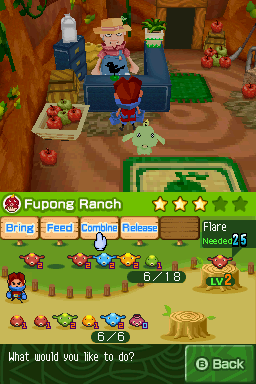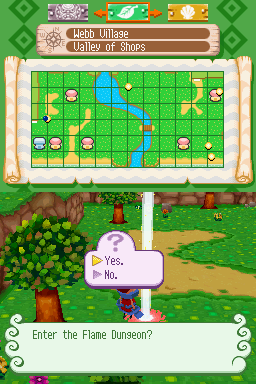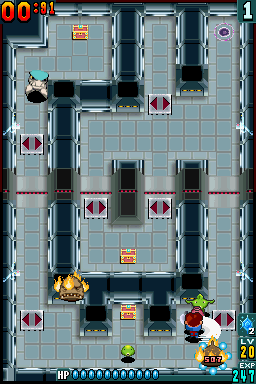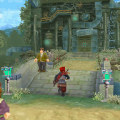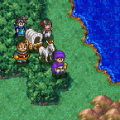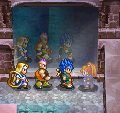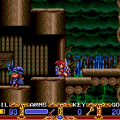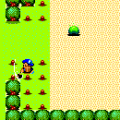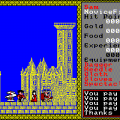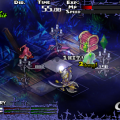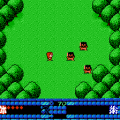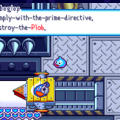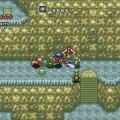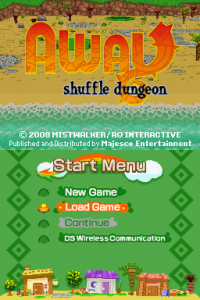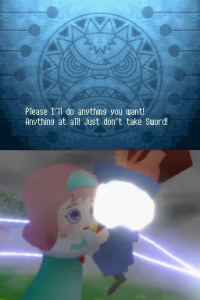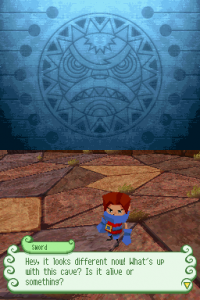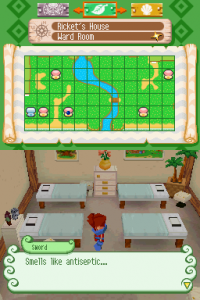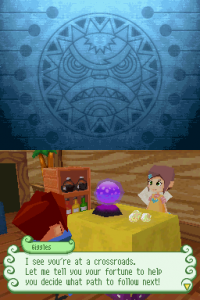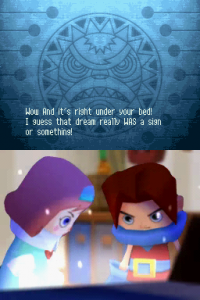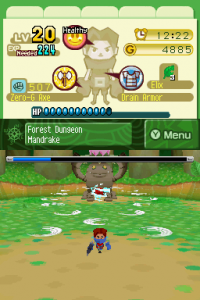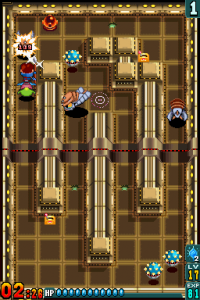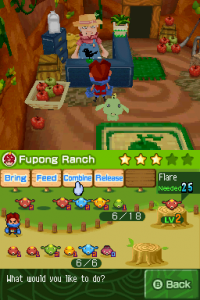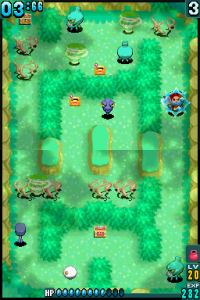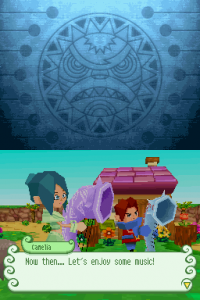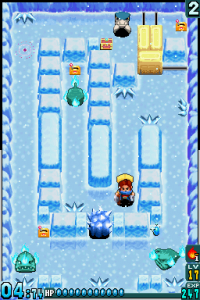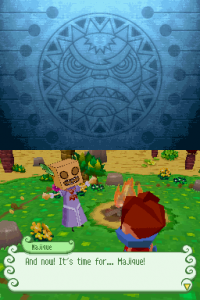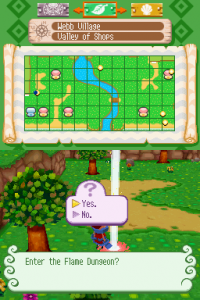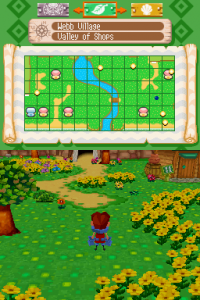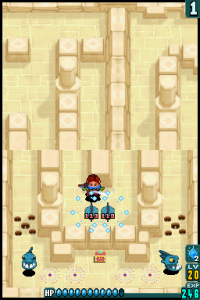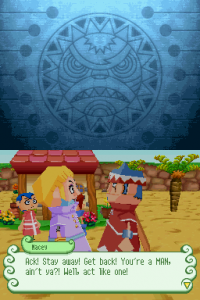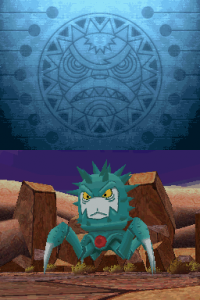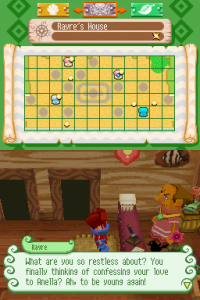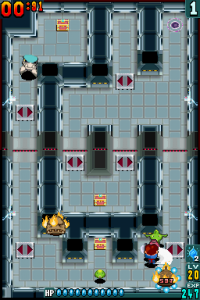Mistwalker, a studio founded by the legendary Hironobu Sakaguchi, was responsible for games like Blue Dragon and Lost Odyssey that provided quality JRPG experiences on the Xbox 360. Despite their critical success, the studio pivoted to development on Nintendo consoles in pursuit of a larger audience in Japan, with four titles hitting the Nintendo DS between 2007 and 2009. One such title was Away: Shuffle Dungeon, an action RPG developed in cooperation with Artoon, who had previously worked on Blue Dragon. Rather than being a hit for the company, Away was instead met with middling reviews, low sales, and quickly faded into obscurity.
Away had some very notable talent involved with its development. Hironobu Sakaguchi was the lead writer and director of the game, Naoto Oshima, designer of Sonic the Hedgehog, was responsible for the character designs, and Nobuo Uematsu composed the main theme of the game. The concept of Away stems from DLC released for Blue Dragon in 2007 called the “Shuffle Dungeon”, which was a dungeon that would change every time the player entered it. Away alters this concept, removing the randomization and instead having the dungeons literally shuffle around as the player moves through them.
The story of Away takes place in Webb Village, a place where people have been mysteriously vanishing due to a force known as the “AWAY” for the past century. A boy named Sword goes to meet his close friend Anella in town only to have their meeting interrupted by the “AWAY”, appearing as a bright and all-consuming light that whisks away Anella and the other villagers. It’s up to Sword to rescue the villagers by traversing the mysterious dungeons that have started appearing and to also discover the secret of the “AWAY” and Webb Village itself. While this premise remains true for much of the game, it eventually takes a strange turn towards sci-fi in the latter half of the game, with a doomsday scenario involving a deadly virus and even time travel shenanigans.
All of the action takes place inside the Shuffle Dungeons, using an overhead perspective with 2D graphics similar to The Legend of Zelda. Dungeons are divided between the top and bottom screens of the DS, and the screens will take turns changing in structure every so often (typically between 3-10 seconds). The objective is to find your way to the next floor while also making sure you don’t get caught on a screen as it shuffles. Once you’ve made it to the end of a dungeon (they’re up to five floors long), there may sometimes be a boss for you to fight, but there will typically be a villager for you to rescue. That’s not all though, as the player will then have to work their way back up the dungeon with the villager accompanying them.
The dungeons for the first half of the game contain typical video game biomes – fire, ice, water, forests, caves, and ruins are what you’ll encounter, with each one getting reused several times. The game does shift to a sci-fi aesthetic for its latter half, but even this becomes repetitive quickly. You’ll encounter a massive variety of obstacles throughout, including movable blocks, magnets that hold you in place, geysers that inflict status effects, bombs that explode upon contact, and tornadoes that patrol specific hallways.
Ordinarily, RPGs encourage thoughtfulness and preparation, but Away forces you to make snap decisions to avoid getting shuffled. Should you forego getting some treasure chests to avoid dealing with a room full of enemies? Do you have enough time to get past those pesky magnets and hit that lever before the screen shuffles? Should you make a beeline for the exit or risk life and limb to see what the next shuffle contains? When Away makes you question the way you’re supposed to play RPGs is when the concept of the game truly feels like it’s working as intended.
Combat in Away is detrimentally simplistic; Sword can attack using the A button, and the button can be pressed multiple times for a combo. You can cast magic too, but spells are limited per floor and Sword never gains any other abilities. Inexplicably, most of the creatures you encounter are fish or crustaceans of some kind, such as angler fish that shoot at you, pufferfish that charge at you, and hermit crabs with brick walls for shells that try to block your attacks.
Sword has the choice of four different weapon types to bring into dungeons. Swords provide a good balance of range, power, and speed. Daggers are the fastest and have the longest combo string of any weapon, but have the shortest reach and the lowest power. Spears have the longest reach and are pretty strong, but they’re somewhat slow and require decent aim to hit foes. Axes are incredibly slow, can’t combo, and have poor range, but they’re the most powerful and can hit multiple monsters because of the way Sword spins around when he swings them.
Sword will also have to rely on small, blob-like creatures called Fupongs. Fupongs come in four different colors and allow Sword to cast a spell once per floor, with a maximum of six being able to follow Sword into dungeons. Red Fupongs shoot a fireball straight ahead. Blue Fupongs create a barrier that blocks attacks, destroys magma blocks, and cures status ailments. Yellow Fupongs summon a thunderbolt that locks onto the nearest target and green Fupongs heal Sword’s HP. Outside of dungeons, Fupongs can also be upgraded at the ranch to become more powerful and change appearance. An interesting wrinkle of this system is how Fupongs follow Sword in dungeons; since they trail directly behind him, it’s possible for them to get caught in certain traps or the dungeon’s shuffle. If this happens, they lose their use for the current floor and Sword will have to fetch them before moving on.
For boss fights, the game changes back into the 3D perspective used outside of dungeons. Most bosses only have a few moves, and defeating them typically involves dodging attacks until a weak point reveals itself. Like with the normal monsters, most of these bosses are some kind of fish or aquatic creature, such as a jellyfish that bounces projectiles at you from across the arena or even a robot fish with a spiked ball arm that jets around the arena in an attempt to sock you. Perhaps the most standout boss of the bunch is the Mandrake, a large tree monster that assaults you with a massive number of projectiles while cleverly covering up its weak spot with a root or a barrier made of wind.
As you proceed through the game, Webb Village will become populated with the villagers you rescue and will have more services to provide you in between dungeons. The early parts of the game have you unlocking all of the essential services – a weapon shop, an armor shop, a blacksmith, and venues from which to get healing items. This loop of rescuing people and building up a village is reminiscent of games such as Brave Fencer Musashi and Dark Cloud, though it isn’t nearly as nuanced or interesting. The only real input you get on the town’s progression is deciding where these primary services should be built, which affects the cost of goods, what they carry, and how long it takes them to upgrade to the next level of inventory.
Villagers rescued in the latter parts of the game don’t have nearly as much use as the ones that run shops, but they do have their charms. For example, once you rescue Camelia, Sword’s music instructor, you can partake in music lessons with her, serving as the game’s sound test. Some villagers, such as Kaanvas the painter, will even decorate the town with new things if they’re given a particular item found in dungeons. While these decorations are purely cosmetic, it’s a nice secondary objective to have nonetheless.
Though the story eventually becomes more interesting, the game is ultimately let down by its weak writing and characterization. None of the villagers you rescue have any charisma at all, with most of them being frustratingly one-note in nature. The weapon and armor shop owners, Macey and Helmut, are obsessed with Giggles, the woman who runs the fortune telling business, and all they ever do is fight amongst each other regarding who deserves her affection. This gets brought up in a lot of different moments and it gets old extremely fast. Even when the characters are faced with harsh truths about their past or a tragic loss, they never have much to say even when their lives are supposedly being turned upside down.
The most egregious example of the game’s flawed writing, however, lies with how Tylor the tailor is portrayed. Tylor is an openly homosexual man who falls into the worst, most predictable stereotypes imaginable. He’s obsessed with other men, constantly flirting with them to the point where all of the other men are perplexed or fearful of him because of it. To make matters worse, after rescuing Tylor, Macey tells Tylor to “act like a man since he is one” and even tells Sword that he shouldn’t have rescued Tylor. Macey is never reprimanded for his homophobia, and the game continues to make this joke multiple times from there.
The DS isn’t known for having strong 3D capabilities, but Away manages to look rather crisp and clear without the blurriness and pixelation so common in other 3D DS titles. The rotund, cutesy character designs fare far better than trying to go for a more realistic look on the DS. All of the villagers have distinct designs and outfits that capture their professions well, such as the sword on Macey’s back or Whip the farmer’s straw hat. The 2D graphics fare similarly well, with smooth and varied animations for most creatures and each of the weapon types Sword can use. There’s also FMV-style cutscenes peppered throughout the game that look great and can stand with the best on the console. They’re well animated and fully voiced, giving the game a cinematic flair that helps the characters feel livelier.
Most of the music in Away aims for a more ambient kind of sound, only increasing in intensity for boss fights. The boss battle theme is one of the standouts, providing an intense and moving track combining woodwind sounds and a constant drum beat. The songs that play in the village provide a soothing and calm ambiance that fits the supposed idyllic and utopian nature of Webb Village. Perhaps the biggest weakness of the soundtrack is that there are simply too few tracks; the dungeons only have a small pool of songs to pull from, a few of which aren’t present until fairly late in the game. There’s also a small number of songs that play during cutscenes, and aside from a properly somber track used for a character’s death, they don’t add much emotion to the story. The DS itself is also working against the soundtrack, with the music sounding rather tinny and compressed coming out of its tiny speakers.
Away: Shuffle Dungeon is perhaps the very definition of wasted potential. The concept is undeniably strong and the developers clearly went to great lengths to try and create something unique. Traversing the puzzle-like layouts of shuffle dungeons can be thrilling when the game is applying appropriate pressure and there’s an undeniable satisfaction to seeing how the weird plot plays out, but it’s let down by overly simplistic gameplay mechanics that never evolve and writing that fails to endear players to Sword and the inhabitants of Webb Village. Away may seem enticing to fans of JRPGs with town building, but this too fails to sufficiently reward the player for their efforts. While it’s impossible to recommend Away over the best DS RPGs, it still may be worth a shot to those who love to see clever and unique ideas in motion, even if they don’t all pan out.
